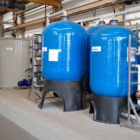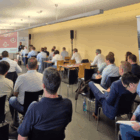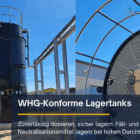Pure water refers to treated water that has a high degree of purity and meets specific requirements in terms of the absence of impurities. It lies between drinking water and ultrapure water on the quality scale and is used in many industrial applications where chemical stability and low contamination are crucial. Pure water is produced using advanced water treatment technologies that remove physical, chemical and biological impurities.
Table of contents
Definition and properties of pure water
Definition of
Pure water is high-quality process water that has been treated by removing suspended solids, salts, organic compounds, microorganisms and other impurities so that it meets the specific requirements for industrial, medical or technical applications.
Properties
- Low conductivity:
- In the range of 0.01-10 µS/cm, depending on the application.
- Minimum salt concentration:
- Reduction of dissolved ions such as sodium, calcium, chloride and sulphate.
- Free from suspended matter and particles:
- Separation of particles down to the micrometer or nanometer range.
- Biological purity:
- No living microorganisms or organic substances that could disrupt biological processes.
Requirements for pure water
The requirements for pure water vary greatly depending on the area of application and industry. Typical parameters and standards include
- Conductivity (µS/cm): Measure of the salt content; influenced by dissolved ions.
- Total organic carbon (TOC): Organic residues that can affect chemical stability.
- Sterility: Requirements for the absence of microorganisms, especially for the pharmaceutical and electronics industries.
- Particle-free: Removal of suspended particles and colloids to prevent mechanical or chemical damage in sensitive processes.
Process for the production of pure water
1. pretreatment
The raw water quality determines the steps required for pre-treatment. Typical pre-treatment steps include
- Filtration:
- Sand or activated carbon filters remove suspended solids and dissolved organic substances.
- Precipitation and flocculation:
- Removal of dissolved substances such as phosphates, heavy metals or silicates.
- Dechlorination:
- Protection of sensitive membranes using chemical or catalytic processes (e.g. activated carbon, sodium sulphite).
2. desalination & sterilization
The removal of dissolved ions is the central step in the production of pure water:
- Reverse osmosis (RO):
- Membrane process that uses hydrostatic pressure to remove up to 99.9% of salts and organic compounds.
- Areas of application: Reduction of conductivity to values between 1 and 10 µS/cm.
- Ion exchange:
- Use of resins to remove cations (e.g. Na⁺, Ca²⁺) and anions (e.g. Cl-, SO₄²-).
- Regeneration: cation exchanger with acids (e.g. HCl), anion exchanger with alkalis (e.g. NaOH).
- Electrodeionization (EDI):
- Combination of ion exchange and electric current to continuously remove ions.
- UV disinfection / TOC reduction:
- Killing germs by irradiation with ultraviolet light.
- Reduction of TOC by UV radiation
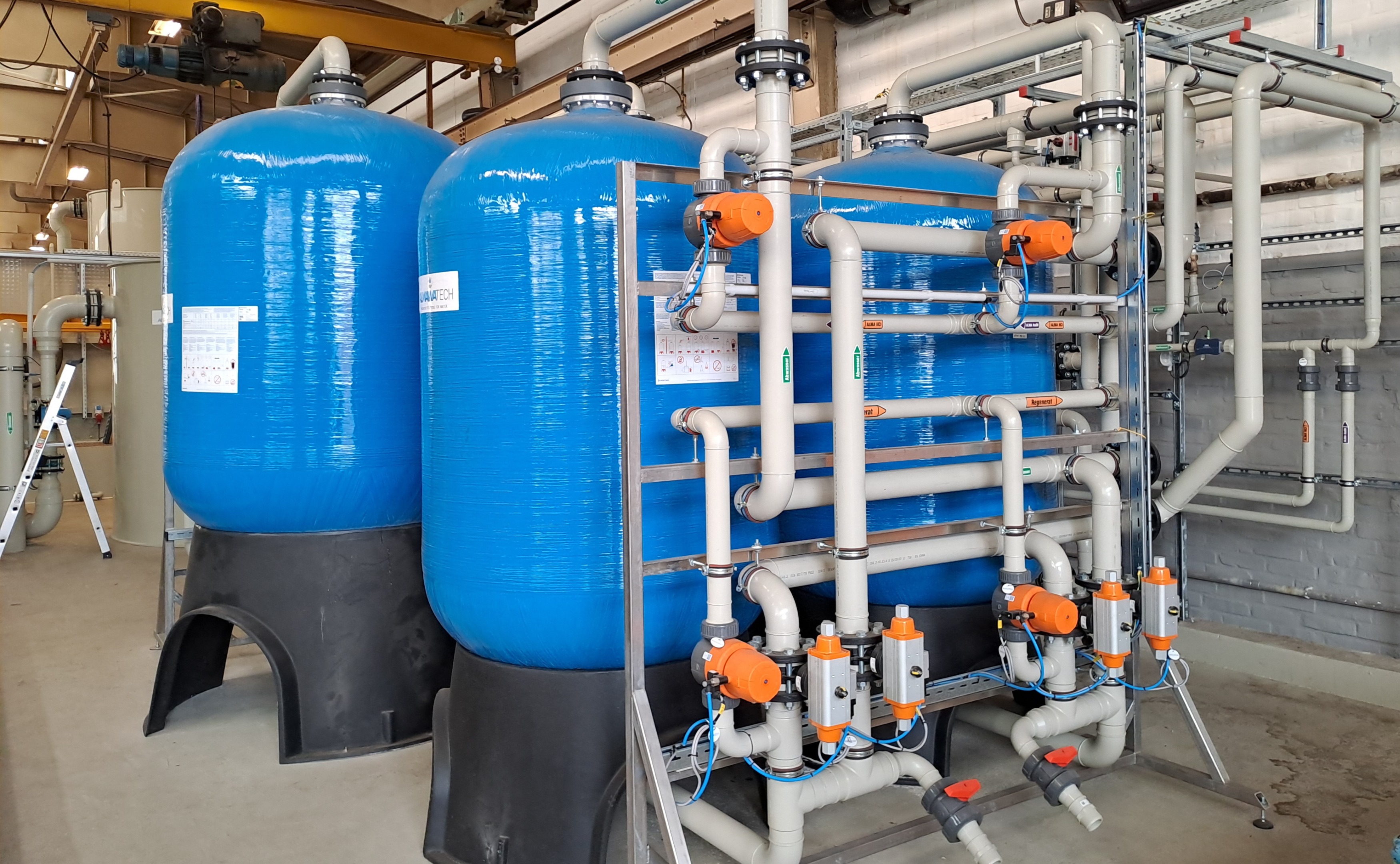
Photo: Our ALMA ION ion exchanger system with upstream ALMA FIL multi-layer filter
Applications of pure water
Pure water is used in a variety of industrial and technical applications, including:
1. electronics and semiconductor industry
- Requirements:
- Free of particles and organic substances, as even the smallest impurities can impair the function of electronic components.
- Areas of application:
- Cleaning of wafers and printed circuit boards.
- Production processes in semiconductor manufacturing.
2. pharmaceutical industry
- Requirements:
- High microbiological purity and low organic load.
- TOC values below 500 µg/L (according to pharmacopoeia).
- Areas of application:
- Manufacture of pharmaceuticals and vaccines.
- Cleaning of containers and systems.
3. energy and power plant industry
- Requirements:
- Water with extremely low conductivity to prevent scaling and corrosion in steam boilers and turbines.
- Areas of application:
- Feed water for steam boilers and turbines.
- Water for condensate circuits.
4. food and beverage industry
- Requirements:
- Tasteless and odorless water, free of chlorine, organic substances and germs.
- Areas of application:
- Production of beverages, e.g. soft drinks and mineral water.
- Cleaning systems and containers.
5. chemical industry
- Requirements:
- Constant water composition to avoid side reactions.
- Areas of application:
- Use as a solvent or reaction medium.
- Production of polymers, solvents and catalysts.
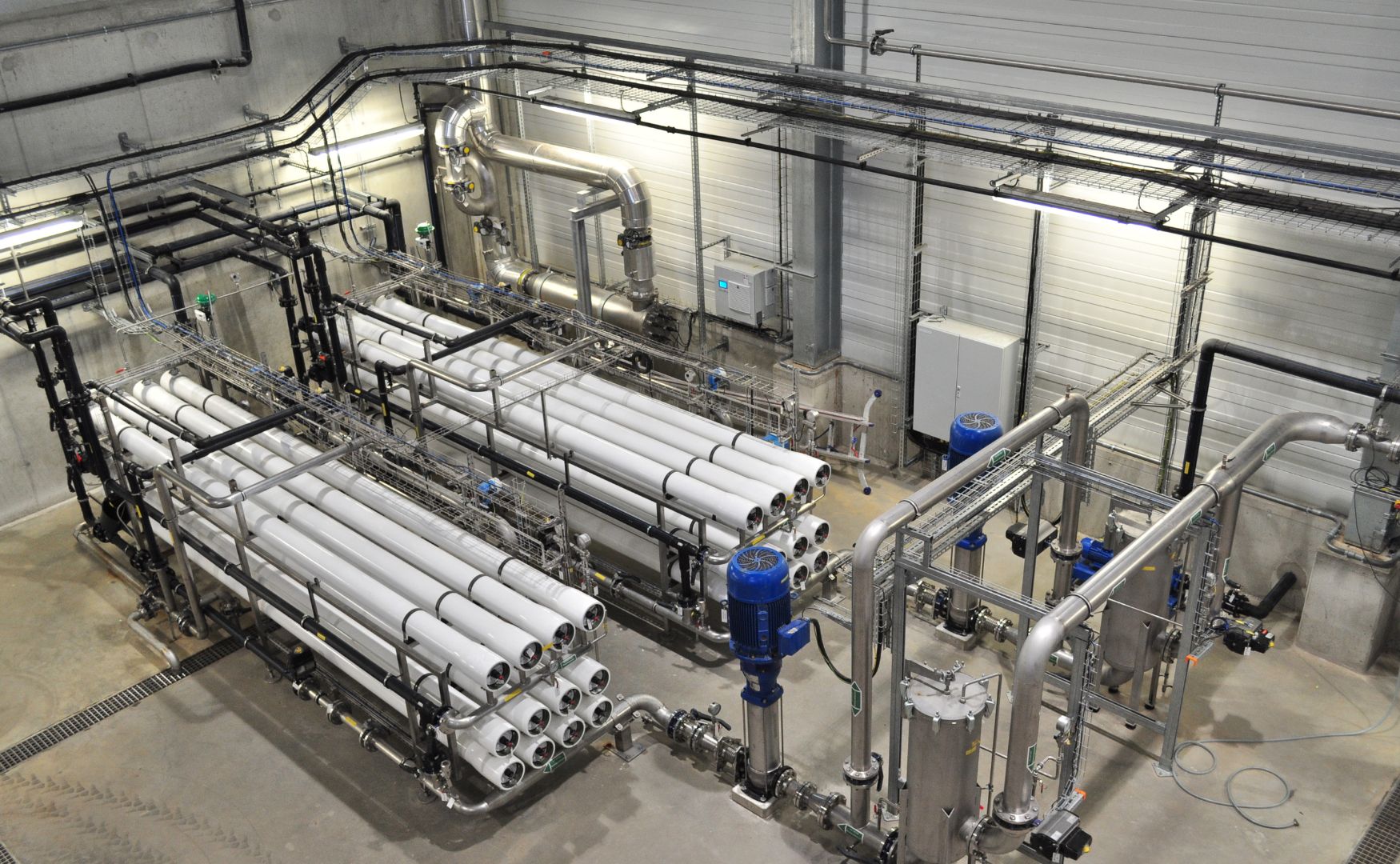
Photo: Our ALMA OSMO reverse osmosis system with CIP cleaning station
Challenges in pure water production
Fluctuating raw water quality
- Challenges:
- Raw water can vary depending on the source and season.
- Solution:
- Flexible pre-treatment systems such as automatic filtration or chemical precipitation.
Fouling and scaling
- Challenges:
- Deposits of dirt, biofilms or salts on membranes or resins.
- Solution:
- Regular cleaning (CIP - Clean-in-Place) and monitoring of operating parameters.
Energy and chemical consumption
- Challenges:
- Energy-intensive processes such as reverse osmosis or EDI can result in high operating costs.
- Solution:
- Use of energy-efficient pumps and optimized regeneration cycles.
Sustainability
- Challenges:
- Disposal of waste water and residues from regeneration processes.
- Solution:
- Recovery of regeneration chemicals and reuse of rinsing water.
Conclusion
Pure water is a central component of numerous industrial processes where high purity and chemical stability are required. Its production requires a combination of physical, chemical and biological processes that must be adapted to the specific requirements of the application. With advanced technologies such as reverse osmosis, ion exchange and UV-TOC reduction, the highest quality standards can be achieved that both meet technical requirements and minimize environmental impact.
For further information on our products, please feel free to contact us at any time!


